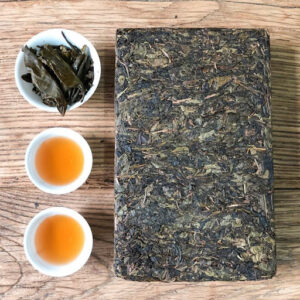As you may know, pu’er tea is one kind of fermented or even post-fermented tea. The tea is traditionally produced in Yunnan Province of China from Yunnan large-leaf varietal of Camellia Sinensis. The process of fermentation, referring to as microbial fermentation, is typically applied after the tea leaves have been sufficiently dried and rolled. There are two types of pu’er tea—raw (shēng) and ripe (shóu), and both of them undergo microbial fermentation and oxidization processes. Raw pu’er teas use a traditional, natural yet longer production process, whereas ripe pu’er teas use a modern and accelerated production process known as wet piling (wòduī) that has been invented and evolved since 1973. The pu’er teas are typically processed into compressed cakes, bricks and tuos. Besides these shapes, there is one shape of pu’er teas that you may never seen before—tea fossil. What is tea fossil, how it tastes and how to drink it? You can find the answers in this article.
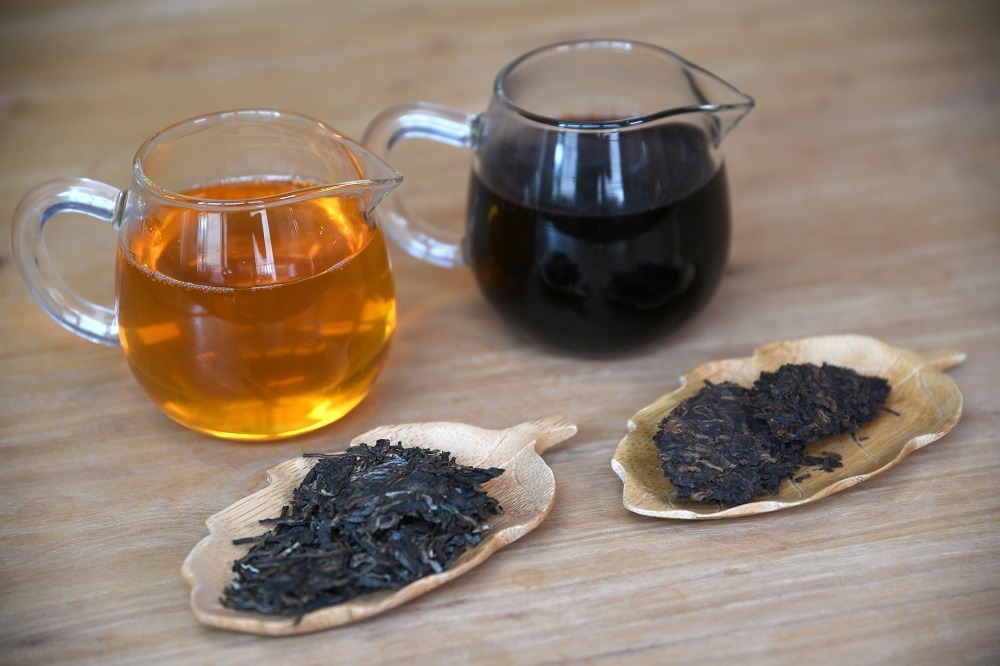
What is tea fossil and how is it made?
Tea fossil, also called “scattered silver” because of its compact and full-bodied shape, is one of the high-quality ripe pu’er teas. How is the unique shape formed? Tea fossil stems from its predecessor—old tea head (老茶头lǎo chá tóu), a kind of tea nugget that forms naturally from the pressures of compression and heat that occurs during the fermentation process. During the wet piling of ripe pu’er tea, tea workers should repeatedly turn the tea pile to avoid the inner heat to be too high, thus the tea leaves secreted a large amount of pectin. The pectin coagulation makes some tea leaves stick together, forming a group of nuggets that are called old tea head.
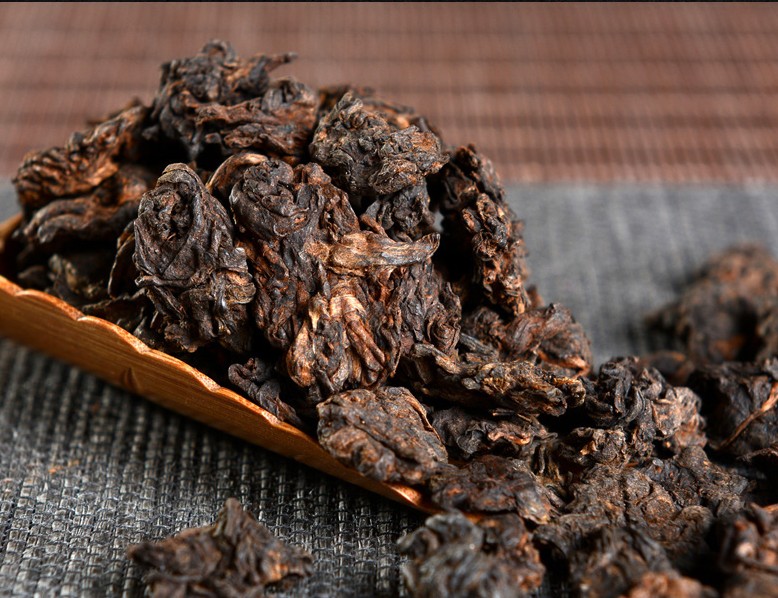
Since these agglomerated tea nuggets are rich in sugar and pectin, the most tender part of the tea, they are selected and processed finely to become the “tea fossil”. Because of the processes, the fermentation degree of tea fossil is more thorough than that of ordinary ripe pu’er tea. Also, during the processing, people use a unique technique to smoke tea fossils with glutinous rice fragrant leaves, so that the tea fossils are soaked with refreshing glutinous fragrance.
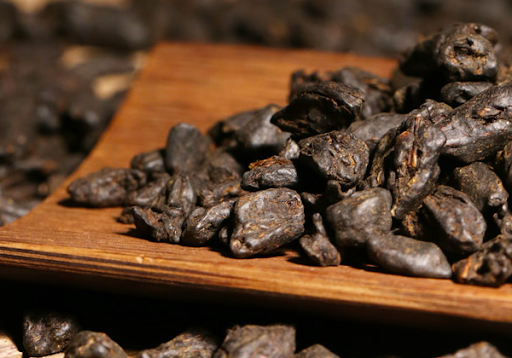
The features of tea fossil
Tea fossil is rich in flavor, high in quality, and suitable for long-term storage, thus is deemed as the essence of ripe pu’er teas. As one kind of ripe pu’er tea, tea fossil has the five basic attributes for the taste of ripe tea: fragrant, mellow, thick, smooth and sweet. Furthermore, the light glutinous rice fragrant distinguishes tea fossil from other ripe teas, adding a thicker, smoother and more lasting taste. Because of its unique shape and refined process, tea fossil is very durable in terms of brewing. Good tea fossil can brew at least 10 times without swelling, and the tea soup may taste still sweet even after 15 brews.

Health benefits
Tea fossil is mild and very good for the stomach. Long-term daily drinking could nourish the stomach. The main effects of tea fossil include reducing fat to help losing weight; strengthening and nourishing the stomach; reducing blood pressure and blood sugar; preventing coronary heart disease, arteriosclerosis; antibacterial and anti-inflammatory. It is very suitable for middle-aged and elderly people, especially for those with stomach problem.
Due to the process of microbial fermentation, tea fossil is rich in probiotics, which has high nutritional value. The probiotic flora of tea fossil is mostly formed during the fermentation process. Through fermentation, under the action of microorganisms, the aroma components, tea polyphenols and other chemical substances in the tea undergo structural transformation, thus presenting unique characteristics and health effects.
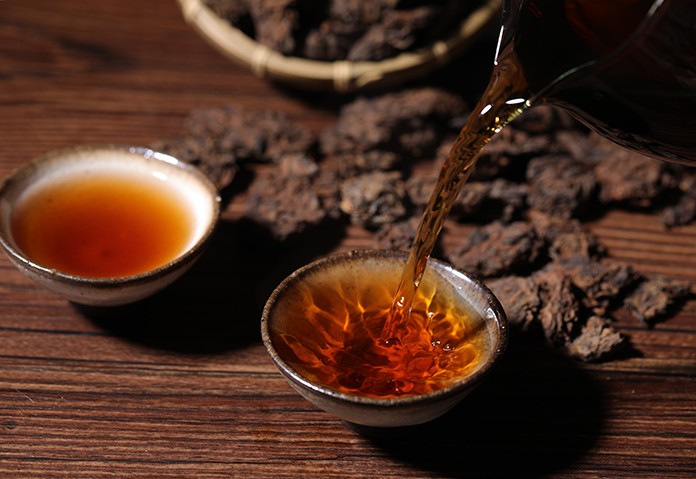
How to brew the tea fossil
- Pick up tea and weigh tea. Use a teaspoon to take an appropriate amount of tea. The amount of 8-10 grams of dry tea is enough for 3-4 people to drink.
- Warm and sanitize tea ware. Use hot water to warm the tea wares, which will help to promote the flavors of tea leaves.
- Rinse the tea fossil. Put the tea fossil into the warmed tea ware, a teapot or a Gaiwan. Use boiling water (at least 95 degrees Celsius) to rinse the tea leaves for the first time and wake up the tea. Stay for about 5 or 6 seconds before pouring the water out.
- First brewing. Use high water temperature (boiling water is fine) and slowly inject into the tea ware. The water can be injected at a fixed point or can be filled in a circle around the lid. Stay for 1 or 2 minutes for the first infusion, and then decant into cups and enjoy.
- More brewing. Good tea fossil can be brewed at least 10 times. Control the time to your preference and enjoy the tea.





